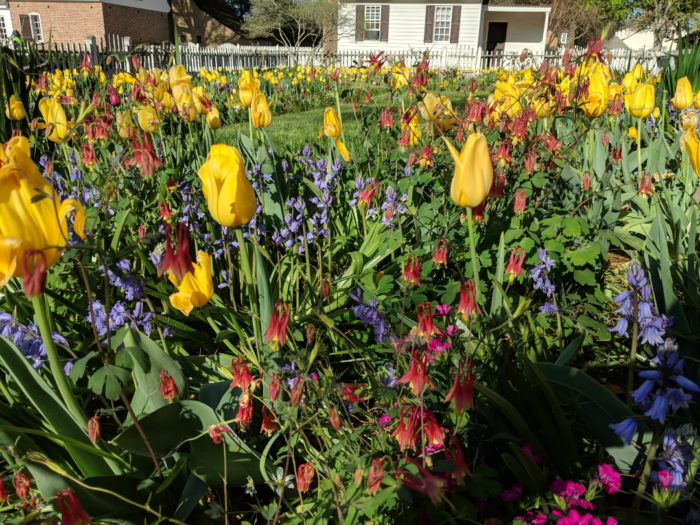
Colonial Williamsburg, in Williamsburg, Va., is known for its historic buildings and staff dressed in period costumes. If you go off the main roads and slip through the little white gates into the spaces behind the buildings, however, you’ll discover numerous beautiful little gardens, which now are a riot of spring color.
The style of the gardens and the plants in them are authentic to the time period. The overall layouts are very formal. They are all straight lines, square beds, and lots of trimmed hedges. Within that formality the plantings are rich, layered, and a little bit wild. The formal structure tames the informal plantings, and the final effect is magical.



Yellow tulips mingling with red-and-yellow native columbine (Aquilegia canadensis, Zones 3–8) and blue Spanish bluebells (Hyacinthoides hispanica, Zones 3–8).

Spanish bluebells are everywhere in the gardens. These tough bulbs take sun or shade, resist deer, and multiply to make big, romantic masses like this. In addition to the common blue, there are white and pink forms, though they tend to be a little less vigorous in the garden.

Neat brick paths and mown grass contain the wild exuberance of the plantings. The whole garden is presided over by an old crepe myrtle (Lagerstroemia indica, Zones 7–9) with a beautiful trunk. White fences and historic buildings frame the scene.
Have a garden you’d like to share?
Have photos to share? We’d love to see your garden, a particular collection of plants you love, or a wonderful garden you had the chance to visit!
To submit, send 5-10 photos to [email protected] along with some information about the plants in the pictures and where you took the photos. We’d love to hear where you are located, how long you’ve been gardening, successes you are proud of, failures you learned from, hopes for the future, favorite plants, or funny stories from your garden.
If you want to send photos in separate emails to the GPOD email box that is just fine.
Have a mobile phone? Tag your photos on Facebook, Instagram or Twitter with #FineGardening!
You don’t have to be a professional garden photographer – check out our garden photography tips!
Do you receive the GPOD by email yet? Sign up here.

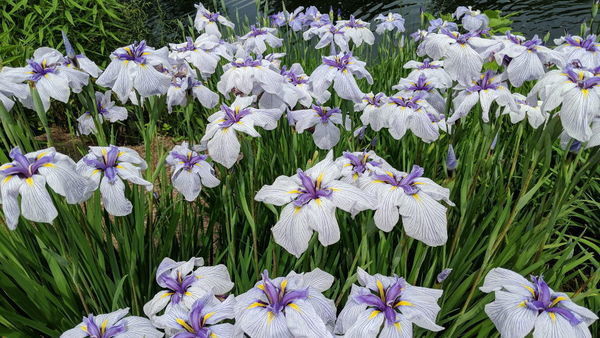
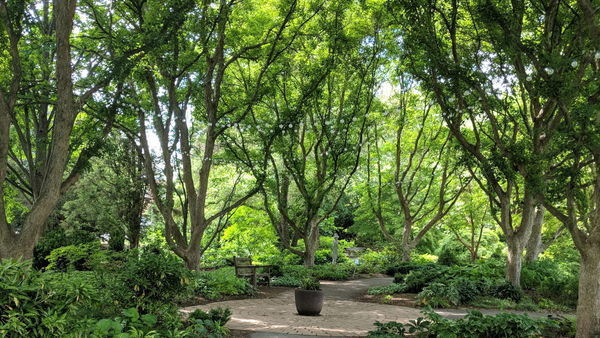
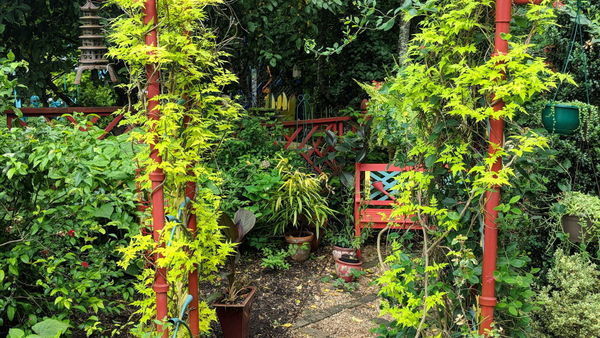
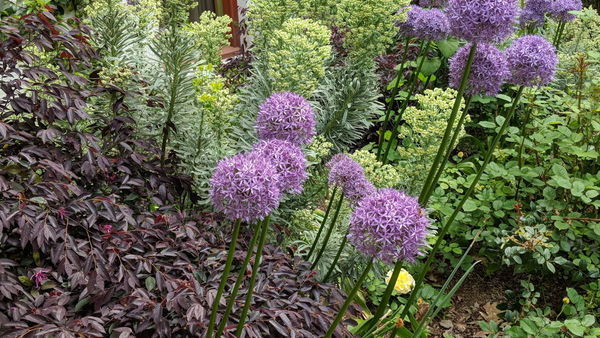












Comments
Good morning, Thank you for this terrific post this morning.
The white picket fences & brick paths offset these gardens beautifully. I am always looking for blue plants & the Spanish bluebells fit the bill.
Thank you & good luck, Joe
Love those Dutch Iris. Supposed to be good down to zone 9. I am zone 8b & have never been able to get them to grow. Well, one came up. But other gardeners in my zone say they can't get them to grow either.
I also belong to the failure with Dutch iris club... but have had great success with Siberian iris which have very similar bloom shapes (to me). Plus, the Siberian iris come back reliably in ever expanding clumps...love them.
That is a gorgeous crepe myrtle in the final picture...its height and spread is very impressive
Beautiful photos of an historical and beloved space. I was given starts of the Spanish bluebells many years ago - mixed colors - and first they 'sorted themselves out' so that the blues grow in one area, and the whites in another - the pinks have long since died out. They are VERY tough - remember, tough is sometimes spelled T-H-U-G, and I've really had to concentrate on pulling out huge quantities... after they bloom... to keep them manageable. They are in the full shade of an old dogwood.
Good morning Cheryl, Thank you for mentioning their thuggish habit. I had intended to plant them in a new cottage garden but now will start them in a more remote area.
Thank you, Joe
I'm going to try the Spanish bluebells in the dappled light, wooded area at the rear of my backyard - we have thinned out the trees slightly, and limbed up to allow for a "sun-lit shady" quality. Thanks for the beautiful photos.
This post brought back fond memories of exploring Williamsburg with our children. The best part to us, was walking through this gates to see the backyard plantings.
Joe, we have a different type of bluebell here in the PNW. They’re beautiful but as Cheryl said, you’ll be finding them all over your yard. I don’t mind since they’re easy to pull out
Mine only spread by bulb division, not out into other beds, so Joe should be safe. But, if we never hear from him again, we'll know what got him!
Oh, and I have gotten the ground cover form of plumbago, which wakes up pretty late, to fill in over them once I pull out all their mushy foliage in late May.
Great to see the blooming tulips, this is a very beautiful spring with lots of fresh flowers hoa khai truong
Log in or create an account to post a comment.
Sign up Log in